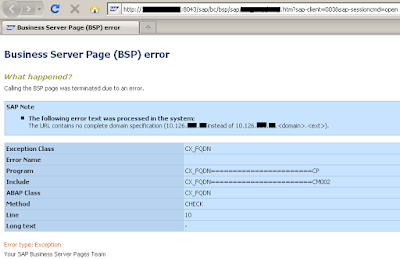How to configure Logon groups in SAP ( SMLG )
How to configure Logon groups in SAP ( SMLG )
Logon Groups:
Logon groups (or work groups) are configured to dynamically distribute the load being processed by the dialog work processes.
In many cases, SAP systems will have 2 or more sap abap instances. In these cases, logon groups can be configured to achieve dynamic distribution of dialog users on the ABAP instances.
A report runs in SAP every 5minutes which determines the load across each server and updates in the memory area of the message server.
Other criteria:
Logon groups according to SAP application / module: Separate logon groups can be setup for applications/modules such as HR, FI/CO, SD, MM etc. It means HR module users will be restricted to logon to identified instances, similarly other module users are allowed to login to their respective identified instances. The advantages of this method, is only the programs of the respective module are loaded into the program buffer of the particular instances of that logon group. Due to this, program buffer requires less memory and this helps to avoid buffer displacements thus improving system performance.
Logon groups according to language, country or company division:
If your SAP system is operating across multiple countries or languages, in that case it is good idea to create logon groups specific to a country or language. By this way the data and text related to specific country or language will be loaded into the buffers of the respective instances.
This minimizes buffer displacements and improves system performance. Also less memory is required for the table buffer.
Logon groups for certain user groups:
i) We can setup separate logon groups for some department like sales whose work is performance critical. For that logon groups we assign instances which operates with high level of performance (e.g: high speed processors, less users per server, no background or update workprocesses configured or a dedicated network etc)
ii) Some department users may take time-consuming reports in dialog mode. For these type of users, you may have to create separate logon group and assign an sap instance where profile parameter rdisp/max_wprun_time is set to very high
In this way we can separate performance critical/resource intensive applications from others.
Logon groups for the SAP Web Dispatcher:
For direct ABAP web service requests, we can setup logon groups that the SAP Web Dispatcher can use. If logon groups are not configured for web dispatcher, the load is distributed to all ABAP instances on which ICM is configured. Also, based on URLs we can distribute certain group of requests to dedicated logon groups.
Logon groups for ALE/RFC:
Asynchronous RFCs are used to process in parallel. However if the parallel processes are not limited properly, they can occupy all the available processes which impacts dialog users and can bring down the application. So, it is good idea to create separate logon groups for incoming RFC calls so that RFCs are kept separate from workprocesses of online users and thus avoids impact to dialog users.
Guide lines:
After assigning instances to logon groups
i) We need to verify whether the instances of logon groups are evenly distributed or not.
ii) If an instance hangs or temporarily got disconnected, you should be able to redistribute the users
So, you need to setup at least 2 sap instances for each logon group.
iii) Setting up logon groups involves extra administration and monitoring. So, unnecessarily large number of logon groups shouldn’t be setup

Comments
Post a Comment